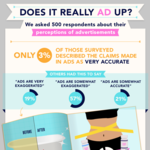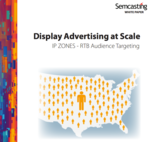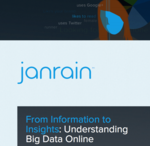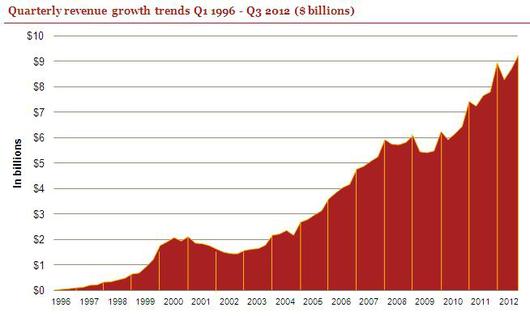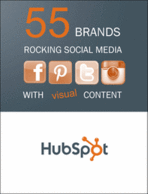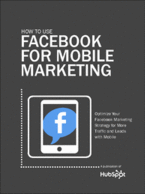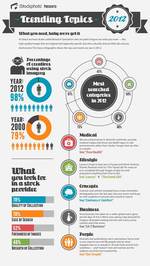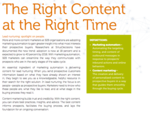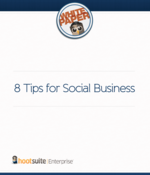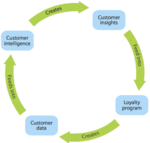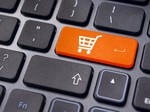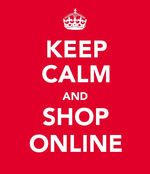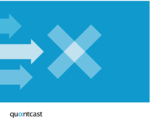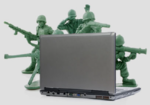Here’s a snapshot at Twitter share of voice and sentiment for top companies in several major industries: Media & Entertainment, Finance, Retail, Telecommunications, Quick-service restaurants, Health, Auto, Nonprofits, Alcohol, Travel, Tech, and CPG.
For each industry, social insight firm Topsy made a chart showing the share of voice for the top 10 businesses or brands with the share of Twitter mentions for each brand across the entire year including events that caused particular spikes.
The charts also show a list of the brands (combining name and Twitter handle) ranked by Topsy’s social sentiment score. To compute the sentiment score, Topsy analyzes about 200 million English-language tweets each day, computes minute-by-minute sentiment for every term in every tweet, and creates scaled scores for all terms, such as the brands and businesses listed here. The scores range from 0 (negative) to 100 (positive), with 50 as neutral.
1. Media and Entertainment
Disney takes the cake for top sentiment score in the Media and Entertainment industry in 2012. (This might also be due to mentions of vacations at the popular Disney parks.) The Discovery Channel and HBO follow in slots 2 and 3, and the MTV video music awards in September caused a huge increase in Twitter chatter:

2. Finance
American Express comes out on top in the financial industry with an average sentiment score of 89.4 for the year. Visa and Mastercard follow closely behind with 83.6 and 71.2, respectively. In terms of chatter volume, when Goldman Sachs executive Greg Smith resigned in March, posting a public account of his resignation for the New York Times, tweets about Goldman Sachs spiked significantly. In addition, talk surrounding British bank HSBC grew quickly in both July and December, when the bank was under fire for money laundering allegations.

3. Retail
Best Buy had the highest Retail sentiment score on Twitter, followed by Lowes and Costco. There were also spikes in conversation for Walmart, Best Buy, and Macy’s on Black Friday:

4. Telecommunications
Boost Mobile ranks #1 for Twitter sentiment among telecommunications companies, followed by AT&T and Century Link as #2 and #3. Major spikes in tweet volume over the year were for T-mobile in May, when the company ran their 4G Tweet Race promotion, and for AT&T in September, when their online “It can wait” pledge – a call to not text while driving – was trending:

5. Quick-service restaurants
The quick-service restaurant with the highest sentiment score for 2012 was Starbucks, with a score of 88.8. Sonic (86.3) and Chipotle (84.3) weren’t far behind. The only signifiant hike in Twitter chatter came from backlash surrounding Chicken fast food restaurant Chick-fil-A in July-August, when company founder Dan Cathy defended Chick-fil-A’s stance against gay marriage:

6. Health
Gym and fitness center 24 Hour Fitness received the #1 spot by online sentiment for 2012 with a high average of 90.7. Popular dance-fitness program Zumba follows closely behind with a score of 89.4:

7. Auto
Which car brands were the most popular this year? Scion takes the cake, while Acura and Audi follow. A small spike in chatter surrounding Acura occurred during the 2012 Superbowl, when their website crashed temporarily:

8. Nonprofits
In the nonprofit sector, United Way, Charity :water and World Vision steal slots 1, 2, and 3 in a close race for highest sentiment score in 2012. The largest spike in volume surrounded the Invisible Children organization, which released a video in March exposing the Lord’s Resistance Army warlord, Joseph Kony, and the plight of African children under his influence. Shortly thereafter, the organization saw widespread criticism for its “hollywood style” campaigning, and controversy surrounded the charity’s leader:

9. Alcohol
Which types of drinks did people kick back with this year? Natural Light, Bud Light, and Guinness were the Twittersphere’s top 3 choices in 2012, with huge spikes in conversation for Bud Light advertisements during the Superbowl and for the classic Irish Guinness on St. Patrick’s Day:

10. Travel
Just as we found in our last airline ranking blog post, Virgin America has the highest average online sentiment in 2012. (For this post we analyzed sentiment for both name and Twitter handle, so the scores are somewhat different.) Virgin America was followed by Travelocity and Expedia, both discount travel booking websites. The largest increase in chatter involved British Airways in June-July, when they became fully integrated with the former British Midlands International. At the same time, British airways also ran a Twitter contest to win lunch with the British boy band One Direction.

11. Tech
While online market giants eBay and Amazon take the top two slots for sentiment score, the most significant hikes in chatter involved Apple. When Apple stock topped $600 a share in March, Twitter was abuzz with opinions and hopes for the tech company’s future. In addition, the social Web lit up with more Apple discussion in August-September, when Apple won their copyright battle against their competitor Samsung:

12. Consumer packaged goods
Finally – what common products were Twitter users buying this year? It seems that beauty products by Covergirl and L’Oreal scored the highest sentiment scores, followed by the Pillsbury baking brand (a branch of General Mills/Smuckers). In addition, Pepsi was a popular topic of conversation after their television commercial efforts, both during the Superbowl in February and for their later Drew Brees vs. One Direction commercial aired in October:

















